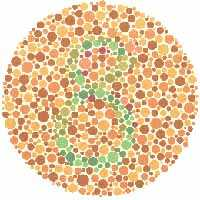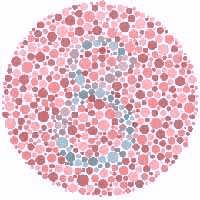|
In the normal color vision, there are three kinds of cone cells in the retina of human eyes for absorbing photons [1]. Each kind of cones determines distinct spectral response, including long- (L), middle- (M), and short- (S) wavelengths. The energy received by the L, M, and S cones is interpreted as the perceivable color information to the brain. People who lack of one of the three basic color mechanisms are called dichromats [2]. According to the missing type of colors, they are classified as protanopia, deuteranopia and tritanopia, respectively. Fig. 1 shows some examples of different types of dichromats, where certain color information disappears for each kind of dichromats. This project aims to recolor images to maintain color contrasts with naturalness preserving for color deficient viewers. The concept of naturalness preserving is considered to keep colors that are originally visible by dichromats and only the un-distinguishable colors are modified in the CVD space.
|
|
|
|
 |
 |
 |
 |
(a)Original |
(b)protanopia |
(c)deuteranopia |
(d)tritanopia |
Fig. 1. Original color image and the simulation results of each type of dichromats. (a)The original image perceived by normal people. (b), (c) and (d) are simulation images of the original image for protanopia, deuteranopia and tritanopia respectively. Especially in (b) and Fig (c), distinct parts of green and orange in original image are almost the same for protanopia and deuteranopia
|

